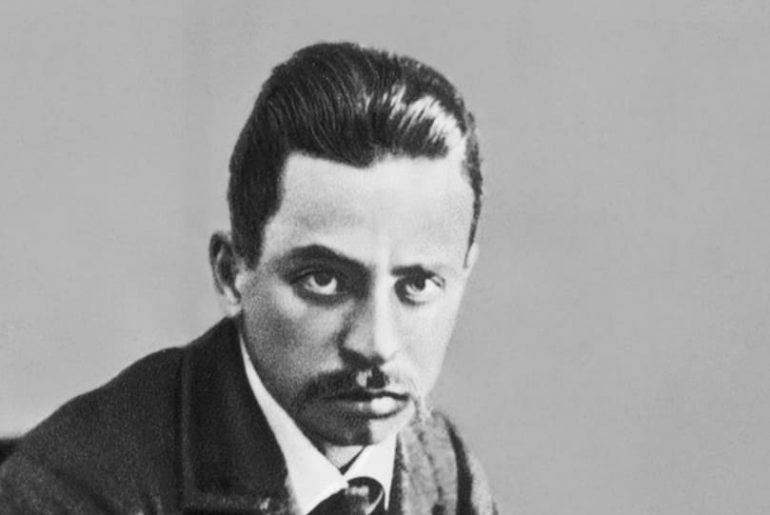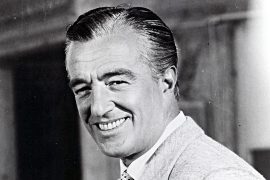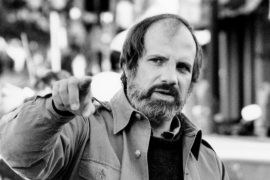The Austrian writer of Hungarian origin is one of the most important poets of the 20th century; his symbolic metaphors identify him as one of the most influential modern poets. The work “Wise of Love and Death by the Cornet Christoph Rilke” (1906) became a bestseller during the First World War. Faced with the realization of dissolved values, of a crumbling world without identity destroyed by war, Rainer Maria Rilke created a poetic-lyrical order in the “New Poems” (1907/08) in which the real became an “art thing”. In addition, Rilke wrote stories, a novel and essays on art and culture as well as numerous translations of literature and poetry, including from the French language. His extensive correspondence also forms an important part of his literary work…
Rainer Maria Rilke was born René Karl Wilhelm Johann Josef Maria Rilke on December 4, 1875 in Prague, Austria-Hungary.
His father, Josef Rilke, was a railroad inspector, his mother, Sophie “Phia” Entz, came from a wealthy family of Prague manufacturers. In 1884 the marriage was divorced. Rilke began to write while he was still at military school from 1886 to 1891. In 1894 his first volume of poetry, “Life and Songs”, was published. In 1891 he broke off his military training due to illness. From 1892 to 1895, Rilke was able to prepare for the Abitur with private lessons, which he passed in Prague in 1895. From 1895 he studied literature, art history and philosophy in Prague. A year later, in 1896, he began studying philosophy at the University of Munich. After meeting the writer Lou Andreas-Salomé in the same year, he followed her to Berlin and enrolled there as a student of art history. He changed his first name René to Rainer. In 1899 and 1900, Rilke undertook two trips to Russia with Andreas-Salomé. He never wrote down a planned monograph on Russian painters. In the artists’ colony in Worpswede he met the sculptor Clara Westhoff and the painter Paula Modersohn-Becker.
In 1901, Rilke separated from Andreas-Salomé and married Clara Westhoff. The two moved to Westerwede near Worpswede. The only daughter Ruth was born. In the following year, 1902, Rilke had to liquidate his household due to financial difficulties. This situation forced him to accept monographic commissions. On a trip to Paris in 1902, he met the French sculptor Auguste Rodin. This acquaintance had a great influence on his works. During this time he wrote the thing poem “The Panther” and the first of the “New Poems”. A year later, the monograph “Auguste Rodin” about the artist was published. In 1905 the “Hours Book” was published. That year Rilke resumed his philosophy studies in Berlin. His work “Way of Love and Death of Christoph Rilke” was written during this time. From 1905 to 1906 Rilke was employed as Rodin’s secretary. In the years 1908 to 1912 the books “Requiem for a friend” (in memory of the deceased Modersohn-Becker), “The Notes of Malte Laurids Brigge” and “The Life of Mary” were published. At a psychological congress in Munich in 1912, Rilke made the acquaintance of Sigmund Freud.
At the beginning of the First World War in 1914, his enthusiasm for this turned into shock. He wrote five “war songs”. The following year, Rilke was drafted into Bohemia and in 1916 transferred to the War Archives in Vienna. After that, he returned to Munich, interrupted by a stay at Hertha Koenig’s Boeckel estate in Westphalia. The traumatic experience of military service – as a renewal of the horrors experienced in military school – almost completely silenced him as a poet. In 1919 Rilke moved to Switzerland. There he met Alexander von Jawlensky. In 1921 he found a permanent home in the castle tower of Muzot (French: Chateau de Muzot) near Sierre in the canton of Valais. In May 1922, Rilke’s patron Werner Reinhart (1884-1951) acquired the building and left it to the poet rent-free. It was here that he composed his works “Duino Elegies” and “The Sonnets to Orpheus”, which he wrote within 14 days.
In 1924 Rainer Maria Rilke fell ill with leukemia, which resulted in frequent stays in sanatoriums. The long stay in Paris from January to August 1925 was an attempt to escape the disease by changing places and circumstances. In the years between 1923 and 1926, however, numerous important individual poems (e.g. “Gong” and “Mausoleum”) as well as an extensive lyrical work in French were written. His book “Michelangelo’s Poems” and his extensive body of letters were published posthumously.
Rainer Maria Rilke died on December 29, 1926 in Val-Mont near Montreux.
After his death his book “Poems of Michelangelo” and an extensive body of letters were published.
What was special about Rainer Maria Rilke?
Rilke is one of the greatest German-speaking poets of the turn of the century. A poet through and through, full of deep inwardness, melancholy and mysticism, he inspires and spiritualizes language. His verses flow like music.
Why did Rainer Maria Rilke die?
Frequent stays in sanatoriums in Val-Mont near Montreux and Bad Ragaz because of leukemia. December 29: Rainer Maria Rilke dies in Val-Mont.
What did Rainer Maria Rilke write?
Rainer Maria Rilke died of leukemia in ValMont in 1926. His most famous works are the “Duino Elegies”, the cyclical prose poem “The Way of Love and Death by Cornets Laurids Brigge” and the novel “The Notes of Malte Laurids Brigge”.
Which poems did Rainer Maria Rilke write?
Other lyrical works include “Advent” (1897), “The Book of Hours” (1905), “Requiem” (1909), “Duino Elegies” (1923), “The Sonnets to Orpheus” (1923) or the French ones Poems “Les Roses” and “Les Fenêtres” (both published posthumously in 1927).
Who is alone now, will it be long Rilke?
Anyone who is alone now will remain so for a long time, will wake up, read, write long letters and will wander restlessly along the avenues when the leaves are blowing.





